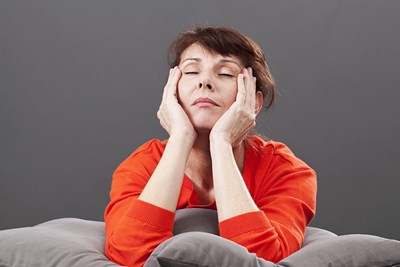Hot flashes are a common symptom of hormonal changes experienced by menopausal and perimenopausal women. Severity of hot flushes, as they are sometimes called, varies widely and in some cases may become severe enough to disrupt lifestyle and daily living. For women experiencing severe hot flashes as a result of menopause and perimenopause, physicians and specialists are sought in efforts for the patient to gain insight and tips on managability through additional hot flashes information.
What Causes Hot Flashes?
Though the specific cause is not currently known, reported medical hot flashes information determines hypothalamic function to be indicated and experts continue to look in this area in an effort to gain additional hot flashes information related to causes and triggers. The hypothalamus serves as the body's control center for basic processes such as sleep, appetite, sex hormones and temperature regulation. Hypothalamic processes are disrupted by the withdrawal of estrogen in menopause, resulting in the hot flashes so many women experience.
The drop in estrogen involves not only the hypothalamus, but the heart, blood vessels and nervous system as well. In response to the drop in estrogen, the nervous system triggers production of epinephrine, norepinephrine, serotonin and prostaglandin. When these chemical messengers are released an increase in heartbeat as well as dilation of blood vessels in the skin occurs in an effort to increase circulation to diminish perceived heat. Hot flushing and perspiration occur when sweat glands respond to changes in circulation and release sweat to aid the body in its cooling process.
Occurence and Duration of Hot Flashes
According to reported hot flashes information, 70-85 percent of menopausal and perimenopausal women experience the symptom in some form as the body adjusts to estrogen changes, with a smaller percentage of women continuing to suffer hot flashes several years beyond initial onset. Available hot flashes information may downplay incidence, experience, occurence and duration of the symptoms of hormonal change in women, which can be very frustrating for those experiencing more severe symptoms and searching for a higher level of explanation and relief. In cases of premature menopause, hormone therapy and with some cancer treatments, the likelihood of experiencing more intense and longer lasting hot flushes is increased.
These extreme fluctuations in body temperature can occur any time of the day and any number of times. Some women experience hot flushes once or twice a day, while others may experience them up to twenty times per day. Heightened variations in body temperature associated with hormonal changes is most commonly experienced mornings between six and eight and evenings between six and ten due to the body's internal processes of regulation. Though the incidence of hot flashes information is underreported by as much as 40 percent, most women experience a peak in intensity at night, which often disrupts sleep. Sleep disruption can be a secondary symptom of hormonal changes and may potentially cause a host of other problems over the long-term if not managed.
Living with Hot Flashes
Living with hot flashes, especially in cases of women suffering severe symptoms of menopause and perimenopause can be made more manageable with planning and lifestyle changes. Avoiding potential triggers such as smoking, alcohol, caffeine, spicy food and diet pills can help reduce the severity and frequency as well as dressing in layers of comfortable light-weight clothing to help manage body temperature externally at the onset of a flush. According to available hot flashes information, other factors such as obesity and activity level may also be contributing factors in women experiencing more severe symptoms of hormonal changes, with many reporting improvement following the implementation of a healthier lifestyle. Additionally, stress is another factor found to exacerbate hot flushes and potential sleep disruptions, which can be improved with stress management techinques such as progressive relaxation, meditation and deep breathing exercises. Ask your physician for additional information as several prescription and non-prescription options are also available.



